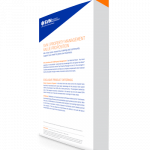The following was adapted from a lunch & learn presentation at Sperry Van Ness | RICORE Investment Management, Inc in Cincinnati, Ohio. This is part four in a four-part series.
Demystifying the Commercial Lease: Part Four
A typical commercial lease is a comprehensive document that may be anywhere from 20 to 60 pages long. (Often with exhibits these things can be huge! So, reviewing new leases can be a real headache for an agent trying to sell or property manager taking on the management of a new multi-tenant property or shopping center.) When paging through a lease many provisions can seem irrelevant, extraneous, unimportant or rarely used. The fact is that every lease provision is drafted to address a specific event, need or situation that a landlord or tenant may face. Today, I was asked to address some of the more ‘legalistic’ provisions in the commercial lease in an attempt to try to ‘demystify’ them for you.
Also be sure to read part one of this series on Subordination, Non-Disturbance and Attornment Agreements and ‘SNDA Agreements’, part two on Tenant Estoppel Certificates, and part three on Indemnification.
IV. Notices Under Commercial Leases
A vague or unclear notice provision can prevent the parties from efficiently enforcing critical rights and remedies under the lease. Notice provisions should specifically identify the acceptable methods of delivery and clearly specify when notices will be deemed to be effectively given. Further, notices improperly given (that is, that do not follow the letter of the notice provision) may be deemed to be ineffective or as no notice at all.
If hand-delivery is an acceptable means of providing notice, the parties should consider whether that method is likely to be effective under their particular circumstances, taking account of the size of the entities involved and other practical considerations. In addition, the hand-delivery method must expressly require an acknowledging signature, receipt, or other documentation to evidence the actual delivery.
The parties should also consider whether to allow notice given by the more convenient methods of facsimile and email, which will depend, in part, on the term of the lease—facsimile numbers and email addresses will likely change over time. Also, the reliability of fax or email notices may be questionable. Sometimes, notice by fax or email will provide that they are not effective until confirmed by a more reliable method of notice, such as by certified mail, return receipt requested, or overnight delivery by national overnight courier service, capable to confirm delivery to a named recipient. Further, the notice provision should contemplate a method to change notice addresses and contact information, such as fax numbers and email addresses.
Related War Story: What constitutes an effective amendment of a commercial lease?
The landlord and tenant have had ongoing discussions about the tenant’s placement of a sign on the roof of an office building shared by the landlord, tenant and other tenants. The tenant had frequent email exchanges with the landlord on a weekly or monthly basis about its tenancy in general, including discussions about the sign. The tenant had been after the landlord for several months to consent to allowing the tenant to install an illuminated sign on the roof of the office building located downtown in the CBD and with significant expressway exposure. The landlord finally consented by email to permit the tenant to install the sign after reviewing renderings of the proposed sign prepared by the tenant’s sign vendor. The tenant had the sign constructed at the cost of $30-40,000 +/-. When the tenant had the sign delivered to the building for installation, the landlord refused to allow access to the roof for installation. A lawsuit ensued. The tenant’s claim to permit installation of the sign was determined by the court to require an amendment to the lease. The lease expressly stated that any amendment to the lease was to be in writing and signed by the landlord and tenant. The email ‘amendment’ was unenforceable, and in fact, was no amendment to the lease at all.
Further, under Ohio law, any material amendments to the lease must be signed with the same formalities as a lease, that is, in writing and with each party’s signature acknowledged by a notary public.
To read more on property management, click here.
